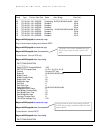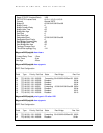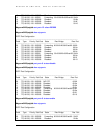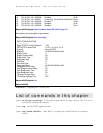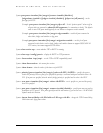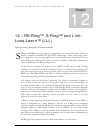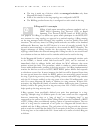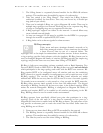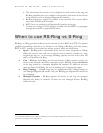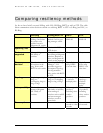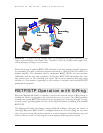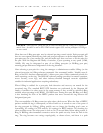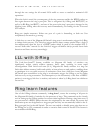
MAGNUM 6K SWITCHES, MNS-6K USER GUIDE
152
4. The same license key needs to be configured for each switch on the ring and
RS-Ring capability has to be enabled on all switches (and hence all the devices
in the ring have to be a managed Magnum 6K switches)
5. RS-Ring topologies support one failure in the network. The second failure
may create isolated network islands
6. RSTP has to be enabled on all Magnum 6K switches in the ring
7. At least one untagged VLAN must be available for the BPDU’s to propagate
through the network to update RSTP status.
When to use RS-Ring vs S-Ring
RS-Ring or S-Ring provides resiliency in the network. So does RSTP and STP. The general
guidelines for making a decision as to whether to use S-Ring or RS-Ring or for that matter,
RSTP or STP, matters a lot on some key criteria, some of which are listed below.
• Speed – RS-Ring offers substantially faster recovery times compared to S-Ring.
While the recovery time will vary on factors such as number of nodes in a ring,
lengthof the ring etc., on an average, RS-Ring typically recovers in less than 100
mSec vs 300 mSec for S-Ring.
• Cost – RS-Rings and S-Rings are licensed features. S-Ring requires at least one
device in the network should be a managed switch. RS-Ring requires all devices
in the ring should be a managed Magnum 6K switches. So while the recovery
times are faster for RS-Ring, the cost of building such a ring may be higher
• Ring Topology – multiple rings may be implemented with S-Ring running on
one managed Magnum 6K switch. Only one RS-Ring per Magnum 6K switch can
be configured
4
.
• Managed Switches – RS-Ring requires all devices in the ring are managed
Magnum 6K family of switches. If there are non managed devices, RS-Ring
cannot be used.
4
It is technically possible to have S-Ring and RS-Ring on the same Magnum 6K Switch. GarrettCom Inc. does not
recommend nor support such configurations.



